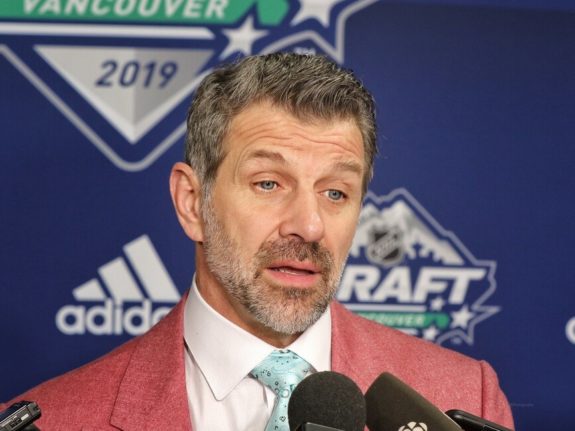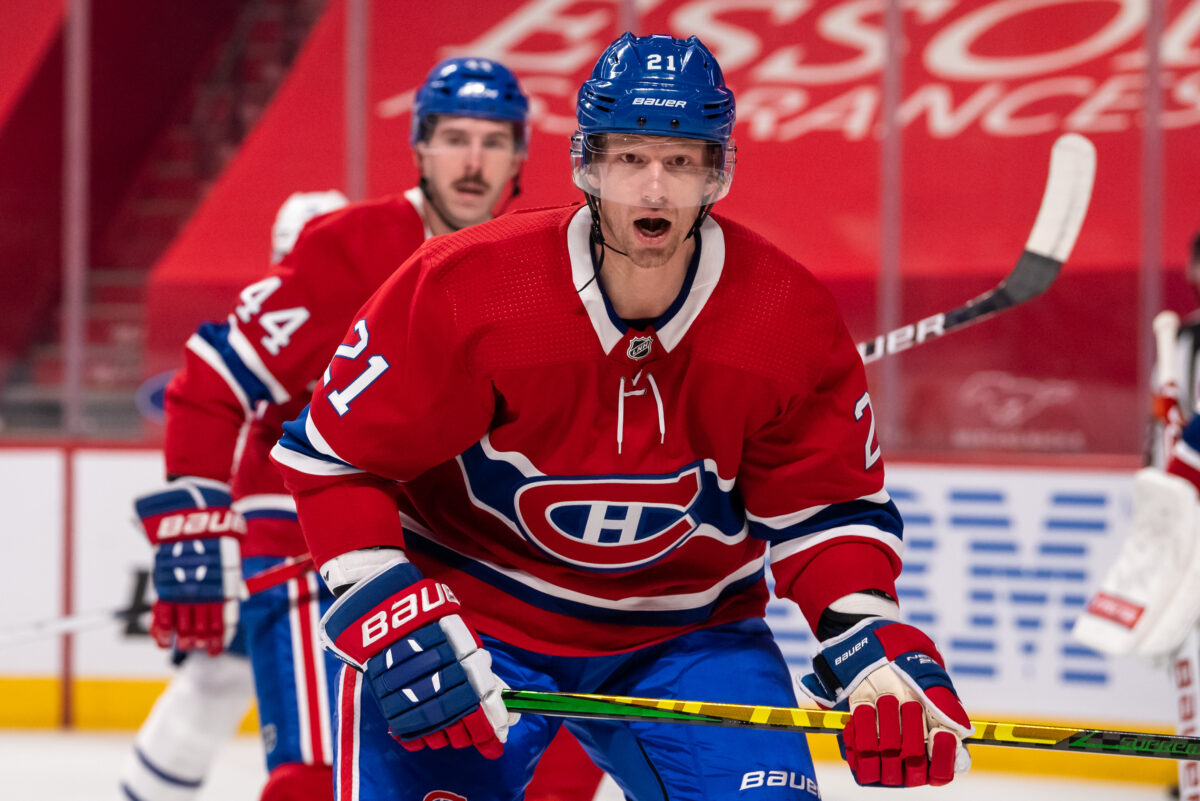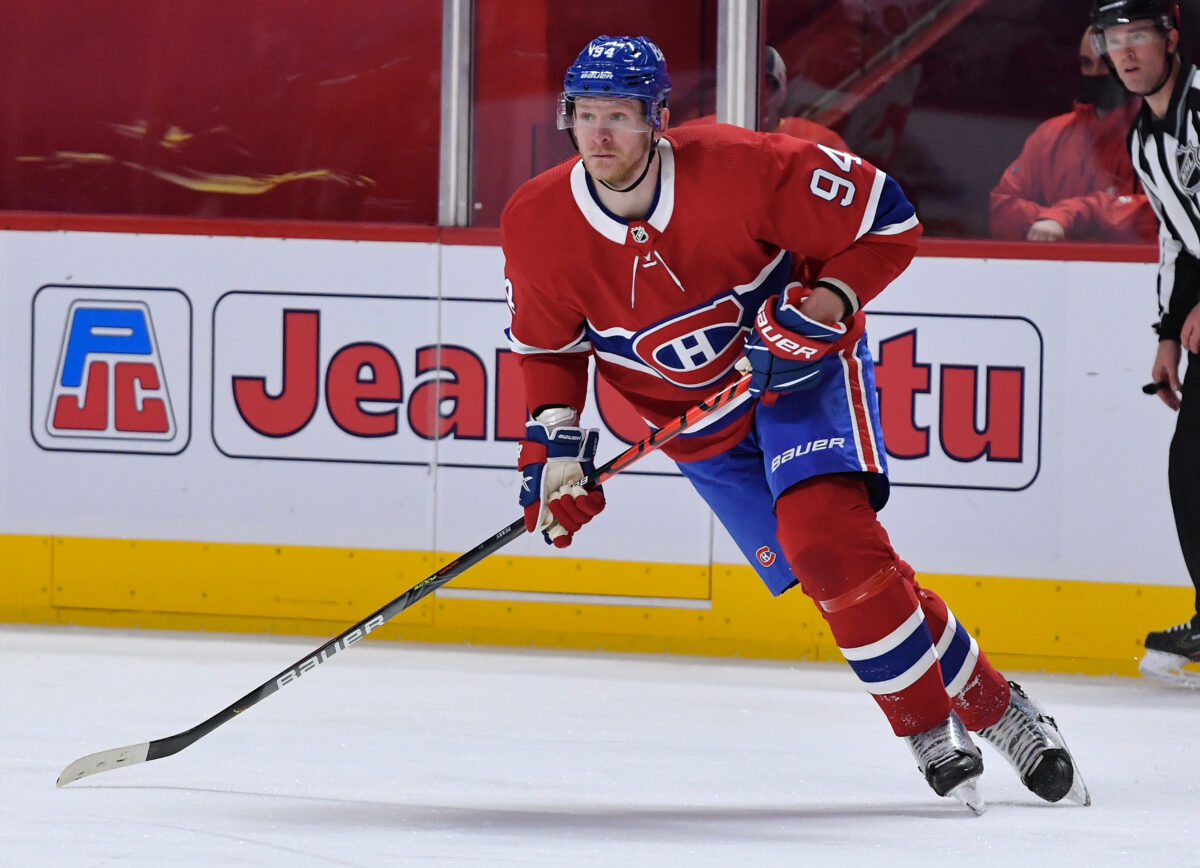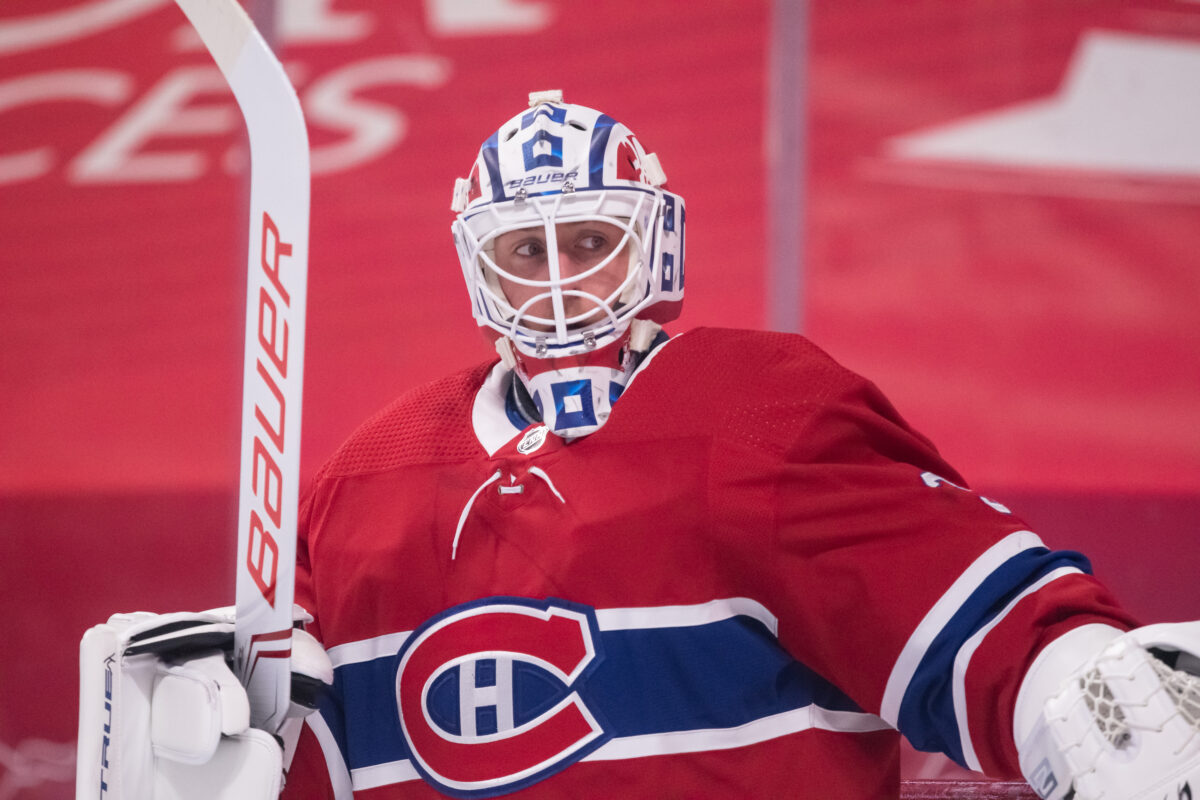After the Montreal Canadiens showed promise with their play in last season’s bubble, general manager Marc Bergevin decided it was time to move his reset a step closer to completion and spend his cap money to improve the team. During the offseason, Bergevin made some big moves by acquiring a backup goaltender, strengthening the defence, upgrading the team’s offence, and adding experience. Once the trade deadline for the season came around, the Canadiens were battling for a playoff spot, and once again, the GM decided to acquire experience and defence. While the offseason acquisitions were working, the deadline deals were not, yet the Canadiens stumbled into the playoffs, and that’s when everything changed.
The Reset
After the disastrous 2017-18 season, Bergevin decided the team needed a change and came up with his reset plan. During this reset, Bergevin hoarded draft picks and prospects while also not overspending on high-priced free agents. The following season, the Canadiens finished in the bottom five league-wide and drafted 3rd in the 2018 Entry Draft. In the 2018-19 season, however, the Canadiens finished with 96 points, and although they missed the playoffs, they gave hope that this reset was going to be short. That hope was quickly extinguished in the 2019-20 season when the Canadiens were once again headed to place bottom five in the league, that is until Covid hit and paused the season.

The NHL decided to restart the season, and instead of finishing the regular season, it created a bigger playoffs, with the top 24 teams in the league playing for the Stanley Cup instead of the usual 16. The bottom eight teams played in a qualifying round to make the official 16 team playoffs, and the Canadiens surprised everyone by defeating the Pittsburgh Penguins and qualifying for the playoffs. The Habs lost in the first round to the Philadelphia Flyers, but the great play of the team allowed Bergevin to decide it was time to again move forward in his reset plan.
Bergevin Finally Spends Money
After three seasons of not spending to the cap before this offseason, Bergevin spent it all. With the exceptional play of young centers Nick Suzuki and Jesperi Kotkaniemi during last season’s bubble, Bergevin decided it was time to take the next step in his reset process and start spending his cap space to ensure a playoff berth and bring the team one step closer to being a Cup contender.

During the offseason, Bergevin traded Max Domi to the Columbus Blue Jackets for Josh Anderson to improve the speed and size up front. He then signed Anderson to a seven-year deal worth $5.5 million per year. He traded a 5th-round pick to the Carolina Hurricanes for the rights to Joel Edmundson and signed him to a four-year contract worth $3.5 million per year to upgrade the defence. He also traded a 3rd and 7th-round pick for Jake Allen from the St. Louis Blues to secure an established backup for Carey Price, pushing the Canadiens goaltending salary to almost $15 million.
Latest Canadiens Content:
- Oilers’ Skinner in Line for Vezina Trophy Winning Season
- Colorado Avalanche Won’t Be Contenders This Season
- Oilers: 8 GMs Who Would’ve Been Better Hires Than Stan Bowman
- New York Rangers’ 4 Best Contracts for 2024-25
- 3 Winnipeg Jets Who Could Earn a Roster Spot in 2024-25
He signed FA Tyler Toffoli to a four-year deal worth $4.25 million annually, and near the start of the season, he signed veterans Corey Perry and Michael Frolik each to $750,000, one-year contracts. This pushed the Canadiens’ salary cap to just under the league maximum of $81 million at the start of the season.
Canadiens Struggle and Make Moves at the Trade Deadline
The Canadiens started the season on fire, winning seven of their first ten games, then everything started to go downhill — to the point where Bergevin had to fire three coaches and try to improve this team at the deadline to make the playoffs. With the cap situation being very tight, the Canadiens had to be very careful who they got at the deadline. However, Bergevin needed a puck-moving defenseman and depth at center, so he acquired Eric Staal from the Buffalo Sabers to help at the center position, Erik Gustafsson from the Philadelphia Flyers as an offensive-minded defenceman, and Jon Merrill from the Detroit Red Wings for a steady depth defenceman.

During the regular season, unlike the offseason acquisitions, the deadline players never really panned out. Staal scored in his first game but didn’t do much of anything after that, and many wondered why he was getting ice time over young Jake Evans. With the addition of Merrill and Gustafsson, the Canadiens had to waive fan favourite Victor Mete, who the Ottawa Senators picked up. Gustafsson barely played, while Merrill played most nights but usually was a non-factor in games. Bergevin’s deadline deals would look like disasters by the end of the season.
Canadiens Make Playoffs, and All Those Moves Turn to Gold
The Canadiens backed their way into the postseason, losing their last five games, but still clinched a playoff berth. They faced the mighty Toronto Maple Leafs, who won the division easily and were heavily favoured in the first round. The Canadiens went down in the series 3-1, but thanks to the moves Bergevin made, the Habs bounced back with the help of Staal, Perry, Toffoli and — surprisingly — Gustafsson. The Canadiens stormed back to win the series in seven games and faced the Winnipeg Jets in the second round.

The Canadiens dominated the Jets, winning the series in a four-game sweep, with key acquisitions proving their worth. Toffoli now leads the Canadiens in playoff points after leading the team in goals and points in the regular season. Perry helped guide the team through the first two rounds by playing solid hockey and helping control the cycle down low while also contributing to the power play (PP), the same as he did in the regular season.
Edmundson was the most consistent defenceman all season with the Canadians and has been a force on the blue line in the playoffs. Even Staal and Gustafsson, who seemed to be deadline busts, provide that extra edge in the playoffs. Staal leads the team in assists and is third in points, while Gustafsson leads defensemen in points and goals while playing limited minutes.
Not Everything Was Perfect, but it All Came Together
Not every move was flawless, but they all left their mark on this team and helped them get to the Stanley Cup semi-finals. Allen isn’t playing in the playoffs but was a key reason the Canadiens made them, filling in for an injured Price and proving why a capable backup is needed to be a playoff team. Anderson is another player who, like Allen, helped the Canadiens get to the playoffs, scoring 17 goals and providing the team with much-needed size and physicality at forward as the playoffs hit; however, Anderson’s scoring touch seems to have left him.

Frolik and Merrill are probably the only two additions that didn’t work out; Frolik played only eight games all season and didn’t register a point but was mostly signed for depth anyway. Merrill came in as a depth defenceman but didn’t prove much in the way of anything; he had some good nights and some bad nights but never really justified the need to have him on the team. As mentioned earlier, Staal seemed like a bust in the regular season but has been anything but in these playoffs, while Perry, Toffoli and Edmundson are steaming along perfectly, just as they have all season.
Bergevin took some lumps during the regular season, with many fans questioning his ability to build a team. If anything, this season has proven Bergevin does have a good idea of building a team; it’s not a perfect one, but it does the job when it needs to be done. As a GM once said, “You have players that get you to the playoffs and players that get you through them.” It seems the Canadiens, so far, have both.